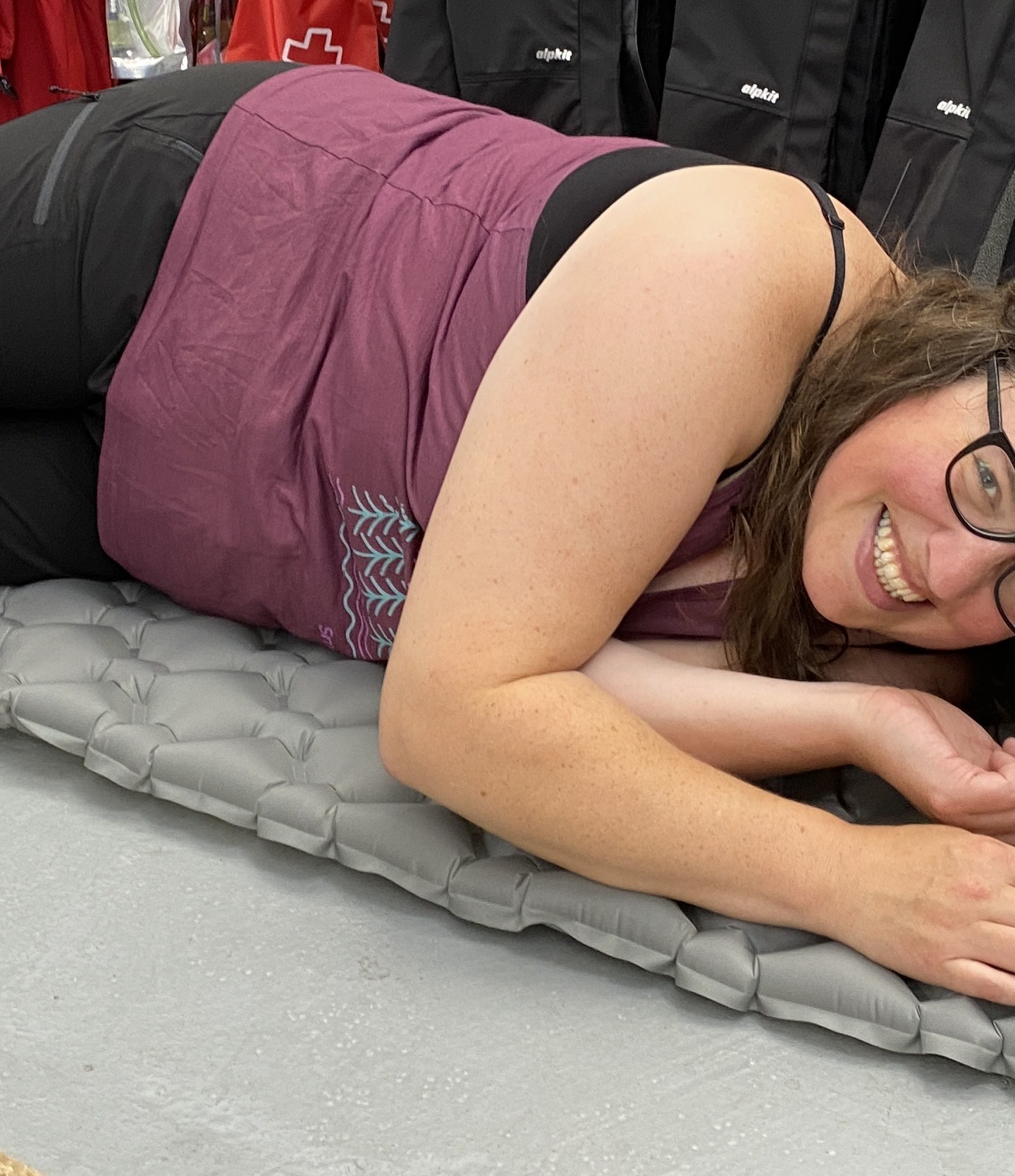
This is a blog by Alpkiteer, Steph Wetherell. She is also the co-founder of Every Body Outdoors, a movement "fighting for clothing, gear and representation for larger/plus-size bodies in the outdoors".
When people talk about size inclusivity in the outdoors the first thing that springs to mind is increasing the size range of clothing. But until recently I’d never had a sleeping bag that did up comfortably around my hips. Generally, things like rucksacks and sleeping bags come in one size, but that one size isn’t plus size. This needs to change.
Size Inclusivity in the Outdoors
Why do we need size inclusive sleeping bags?


At the moment, it’s really tricky to find a lightweight packable sleeping bag that will fit anyone above a UK size 22. This means that activities like wild camping and multi-day hikes/bike rides are impossible as a larger person, unless you fancy lugging a bulky 3kg sleeping pod with you. Whilst the industry pre-conception is that larger bodied folk don’t want to do these activities, my experience with Every Body Outdoors shows that a lot of people would love to, but are prevented by not being able to find the gear they need.
I didn’t buy a new sleeping bag for a long time because I was too embarrassed to go into the middle of a busy outdoors shop and try on a bunch of sleeping bags that probably wouldn’t fit me. I was lucky to find a friend who had the sleeping bag I wanted, and who let me try it on for size in his house. Online shopping is equally tricky, as not only do you have to trawl through each listing, but most brands only have limited size information available on their website.
I recently met up with Laura and Rowan from the Alpkit Product Development team and tried on some of the Alpkit sleeping bags for them - the majority of which fit my size 20 body. We talked about how Alpkit could make sleeping bags more inclusive for larger bodies going forwards, and following my request, the website now has more detailed sizing information available to enable people to determine whether a bag will fit them when buying online.
Why do we need size inclusive rucksacks?

One of my significant outdoors shopping memories was going to get fitted for a rucksack, only to find that the rucksack sizer designed to measure the length of my body didn’t go around my hips (by quite a long way). I was able to shrug this off at the time, but this is only the tip of the iceberg when it comes to finding a rucksack to fit a plus size body.
The most obvious issue with rucksack fit is a hip belt that doesn’t accommodate large bodies. But even when it does, the padding doesn’t come around far enough and leaves the straps digging into our hips. The hip pockets are often unusable due to their position, or small design oversights mean that buckles dig into large bellies, or that shoulder and chest straps rub against our upper arms and armpits. As a size 20, I can just do up most rucksacks, but very few of them are comfortable. For larger sizes, even finding a rucksack that will do up is challenging.
Making rucksacks more inclusive is about so much more than just making a hip strap longer, which is why when considering expanding the size range, it’s vital to engage with plus size and larger bodied folk to find out the challenges they are facing.
What are the problems with ill-fitting equipment?

This issue stretches beyond just comfort and practicality too, when things like Personal Flotation Devices (PFD) and climbing harnesses come into play. The lack of availability of key safety kit for outdoor activities is an insurmountable barrier to participation for larger bodied folk, particularly women. Simply wearing the largest mens size is not an option for many women - a men’s PFD isn’t designed to accommodate a large bust, which means fit and safety is compromised in the water. While some of the larger men’s climbing harnesses may fit a plus size woman around the waist, often the leg loops are too small to accommodate our thighs.
The more you dig into the topic, the more issues you find. For example, if you want to try paddle boarding for an afternoon, you have to find somewhere that will (a) have a wetsuit that fits, (b) have a PFD that does up and (c) have boards with a large weight limit (a lot of cheaper boards bend in the middle with higher loads). The act of signing up for a beginners course is a minefield for anyone with a larger body.
What change is needed?
The lack of size inclusive kit for outdoor activities means that those of us with larger bodies feel like these sports and activities aren’t for us. But they are. There are plus size climbers, canoeists, hikers, cyclists etc out there - we’re just doing these things by cobbling together ill fitting and uncomfortable kit.
We need brands to listen to those of us with larger bodies, to ensure that the kit and equipment they are making works for us too. It’s been great to work with Alpkit on this so far, but this is a shift we need to happen across the entire industry.
